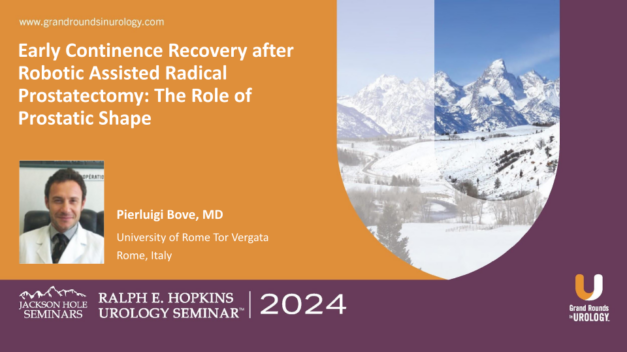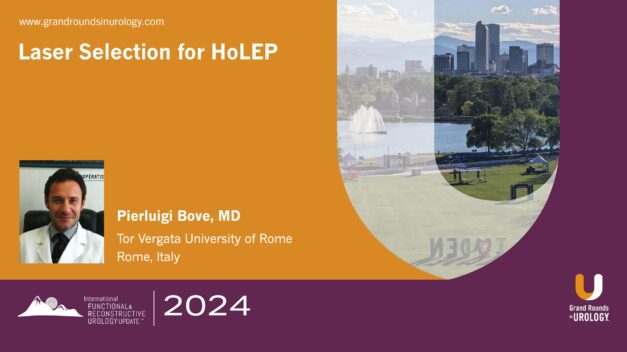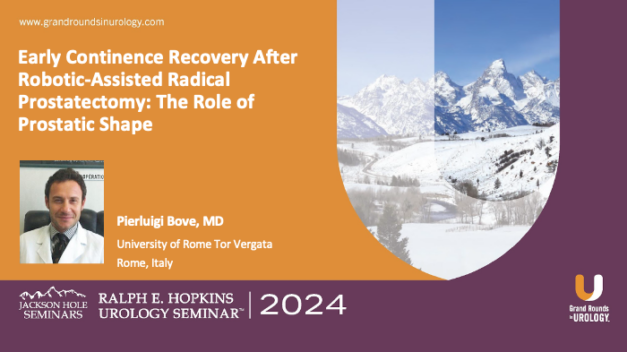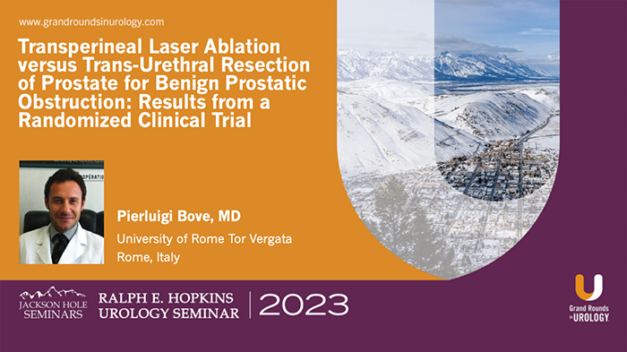Early Continence Recovery after Robotic Assisted Radical Prostatectomy: The Role of Prostatic Shape
Pierluigi Bove, MD, explores the role of prostatic shape in continence preservation and recovery after robotic-assisted radical prostatectomy (RARP). Dr. Bove begins with a review of the key preoperative anatomical landmarks and how they inform surgical strategy.
Dr. Bove presents data supporting the relationship between preoperative Membranous Urethral Length (MUL,) bladder neck preservation, prostatic shape, and continence recovery post-RARP. He notes that preserving as much of the MUL and bladder neck as possible led to significantly higher rates of continence. Additionally, he notes that prostates with no membranous urethral overlap, or “apple-shaped” prostates, had the best urinary continence recovery.
Dr. Bove concludes by presenting video examples of RARP surgical strategies which preserve/ promote continence recovery. He presents common complications during RARP and examples of how his institution has compensated for them.
Read More




